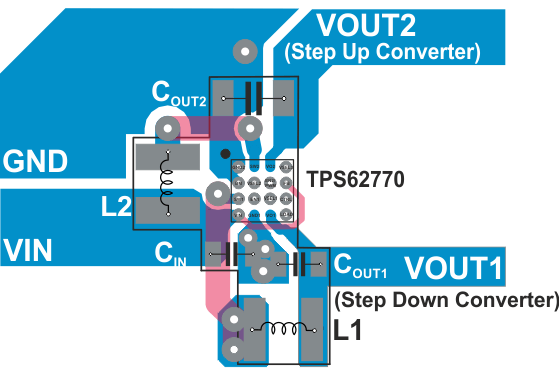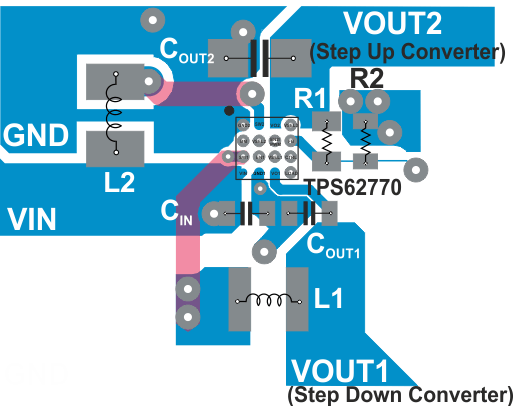SLVSCX0B February 2016 – April 2016 TPS62770
PRODUCTION DATA.
- 1 Features
- 2 Applications
- 3 Description
- 4 Revision History
- 5 Pin Configuration and Functions
- 6 Specifications
- 7 Detailed Description
- 8 Application and Implementation
- 9 Power Supply Recommendations
- 10Layout
- 11Device and Documentation Support
- 12Mechanical, Packaging, and Orderable Information
Package Options
Mechanical Data (Package|Pins)
- YFP|16
Thermal pad, mechanical data (Package|Pins)
Orderable Information
10 Layout
10.1 Layout Guidelines
- As for all switching power supplies, the layout is an important step in the design. Care must be taken in board layout to get the specified performance.
- If the layout is not carefully done, the regulator could show poor line and/or load regulation, stability issues as well as EMI problems and interference with RF circuits.
- It is critical to provide a low inductance, impedance ground path. Therefore, use wide and short traces for the main current paths.
- The input capacitor should be placed as close as possible to the IC pins VIN and GND. The output capacitors should be placed close between VO1/2 and GND pins.
- The VO1/2 line should be connected to the output capacitor and routed away from noisy components and traces (e.g. SW line) or other noise sources.
- See Figure 45 and Figure 46 for the recommended PCB layout.
10.2 Layout Example
 Figure 45. Recommended PCB Layout with 12 V Fixed VOUT2
Figure 45. Recommended PCB Layout with 12 V Fixed VOUT2
 Figure 46. Recommended PCB Layout with Adjustable VOUT2
Figure 46. Recommended PCB Layout with Adjustable VOUT2